Ball maple diseases – maple tree in the garden
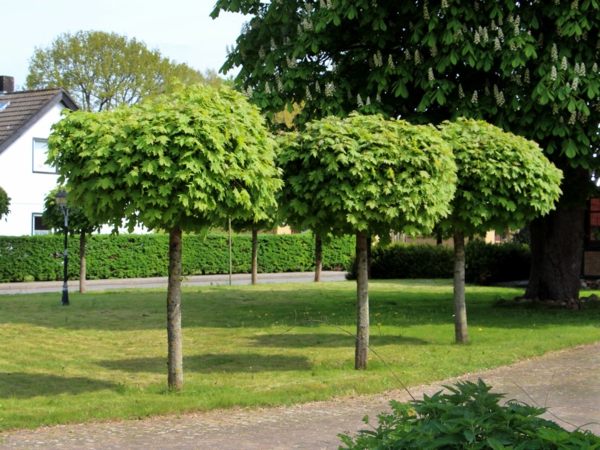
Would you grow ballahorns in your own garden?
Small, slow-growing shrub with a length of 4 m., Usually grafted on a rhizome, it becomes a small tree with a round crown. Because of its striking foliage color, the maple is an attractive spring tree. The foliage unfolds in spring with a characteristic pink color and turns within weeks into a yellow-orange color.
Later, the leaves turn yellow-green and last – light green. While the leaves unfold, the flowers still appear. This tree can be found in almost every park. It is also suitable for small gardens. It is tolerant to damp, cold soils and wind resistant yet. The bright sunlight can burn off the leaves.
Ball maple diseases
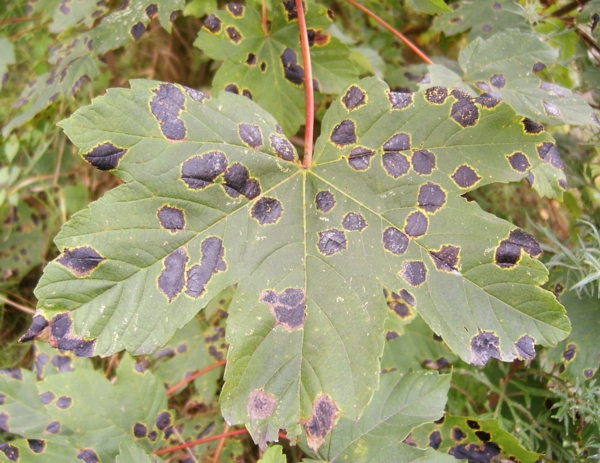
Some butterfly species use the maple to feed plant. The aphids are also other plant sucker Kugelahorn. In landscaping, the dimethoate spray will solve this problem.
In the USA and Canada, all sycamore maple species are threatened by Asian Longhorned Beetle.
The ball maples are affected by fungal diseases. Several are susceptible to wilting caused by the Verticillium species, which can cause significant mortality. Soot-contaminated bark disease caused by the Cryptostroma species can destroy those trees that are under stress of dryness. The maple leaves in late summer and autumn are defaced by “tar spot” caused by mildew.
Golden leaves
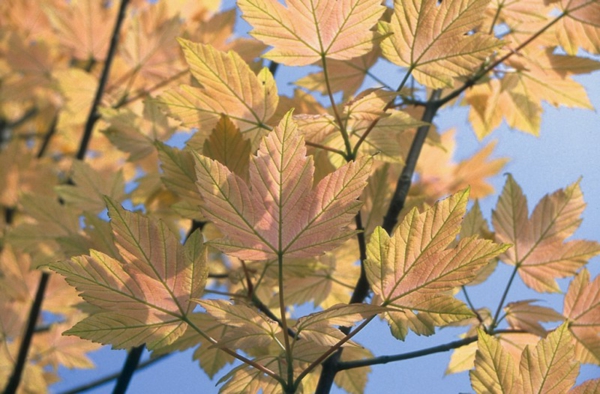
Height – 5-7 m
Crown – round
Bark and twigs – gray, gray to olive green
Foliage – pink over yellow-orange to light green, 12-20 cm
Flowers – yellow-green in April
Fruits – lively nutlets
Cultivation – small gardens, parks
Soil type – all
Wind resistant – very good
Broad round crown
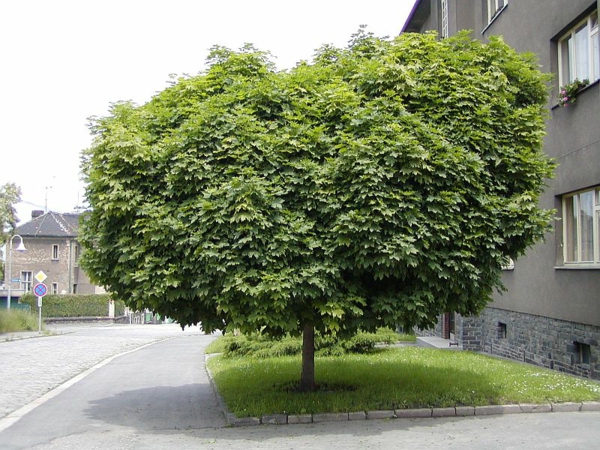
Seen in the park
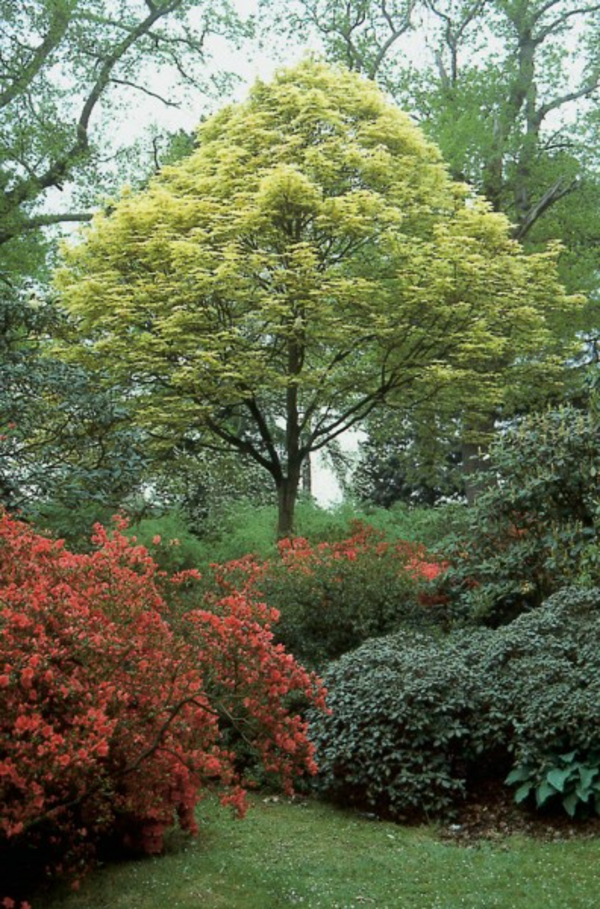
In the front yard

Golden tree crown
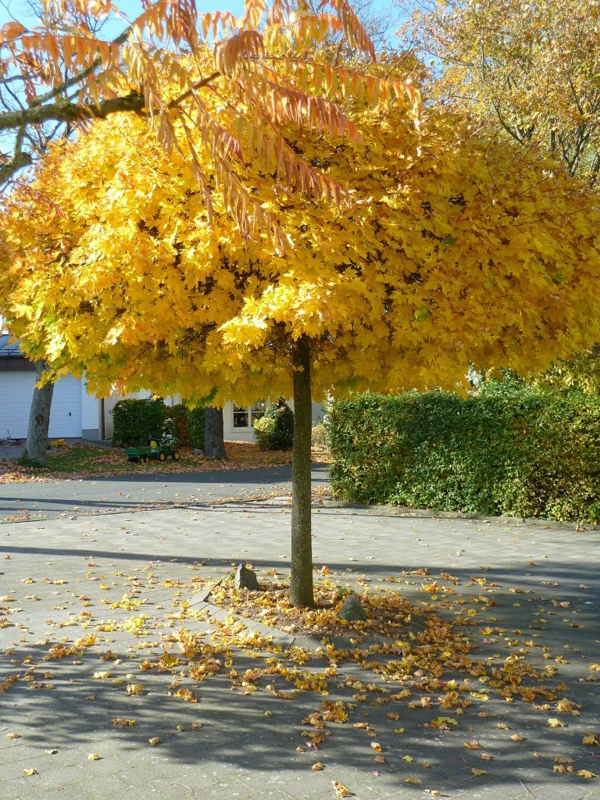
Small and decorative
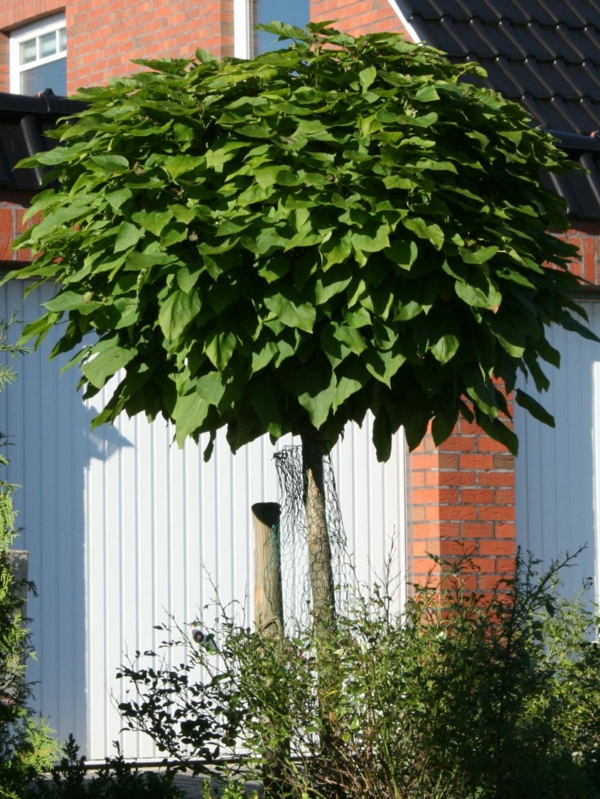
Lush shade over the garden bench
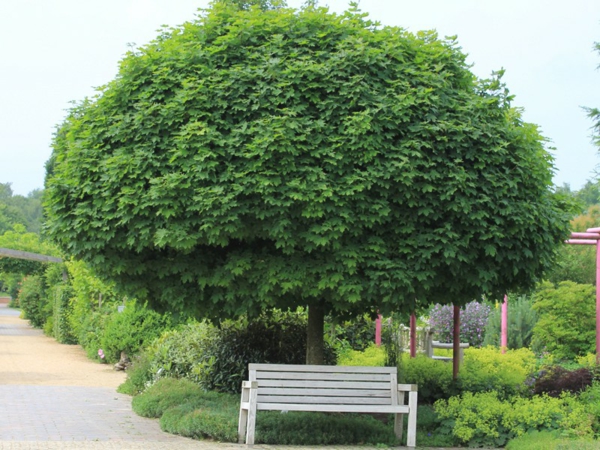
Tall maple tree in the park

Round Maple Diseases 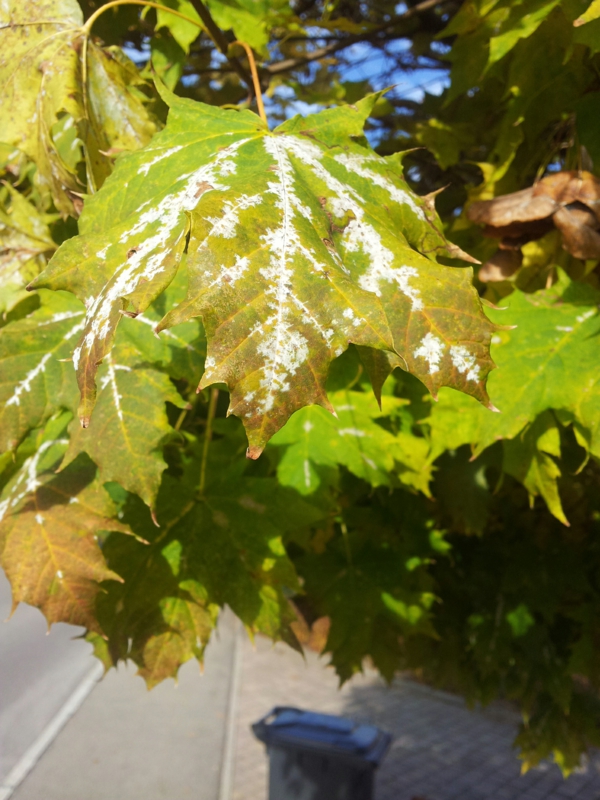
This beautiful tree looks elegant and decorative

